JapanMapJune 27 — July 4, 2004 It turns out that Japan is very difficult to visit. You can’t just get a visa, book a hotel online, and saunter around the country as you please. First, you have to find a travel agency willing to accept your payment (turns out that many of them don’t actually need your money). Then you have to come up with an itinerary just by looking at the map. Plus you have to pay twice the price for all of your hotels upfront, while still in Moscow, because Japan’s ministry of foreign affairs supposedly requires for everything to be sorted in advance — so that it knows where and at what time you will be for the entire duration of your stay. After that they will adorn your passport with a visa bearing a cherry blossom and your photo (why you need one on the visa when there’s already one in your passport remains a mystery). I knew little about Japan before my trip. A mishmash of general ideas, magazine articles about the newest electronics, as well as the standard set of vocab (sushi-Hiroshima-Mitsubishi-shuriken-harakiri-kamikadze). In my mind Japan was like a city on Mars, utterly perfect. I had a hard time imaging a crack in the pavement, let along a dumpsite on Japanese territory. I discovered that you can forget about using your phone while in Japan — European standards aren’t supported here, so you can just switch it off. All Japanese phones are made for 3G and they’re all flip brick-sized phones. When you’re open them they’re the size of two bricks. 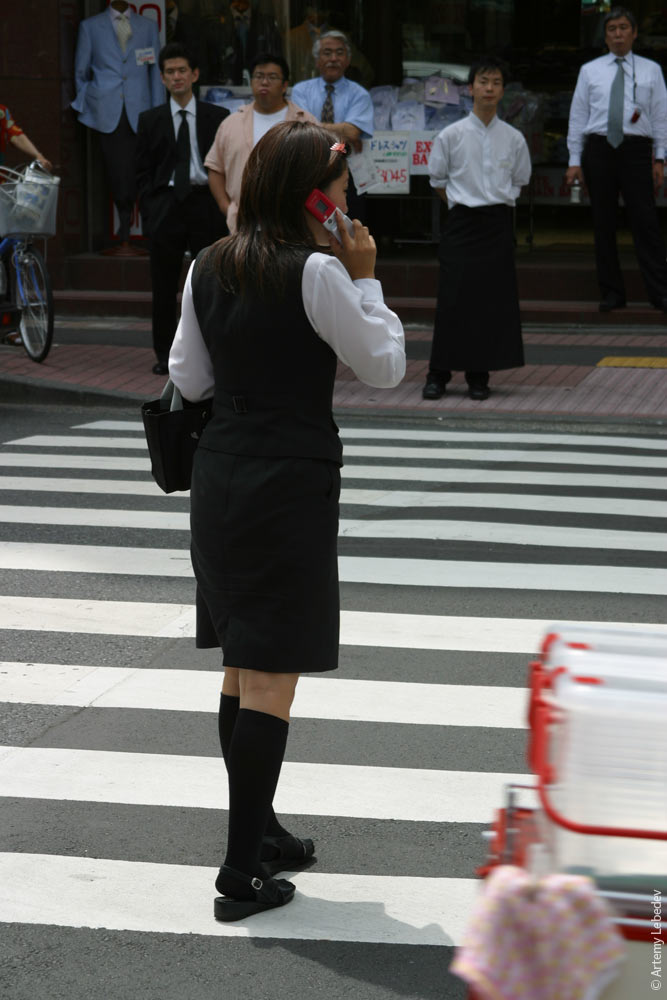 I only saw about five or so ATMs over the course of my entire trip. None of them would take my card. This wasn’t the end of the world, because you can pay for practically everything, except for Ferris wheel tickets, by card. All graphic and navigation interfaces in Japan are fantastic. All computerised interfaces without exception are downright awful. For starters, the numbers on the ATM keypad are laid out in a row, not in the block we’re used to. The soft drink vending machines were no better: only a dextrous professional can extract a bottle out of one of them, and he has to squat in order to do so. The locals told us that if you buy two cans at once you won’t be able to get them out at all. I tired it — it’s true. There’s some trick to it, because the cans block each other. After spending ten minutes poking around its invisible womb you can coax the machine into giving birth, but only if you possess innate stubbornness. 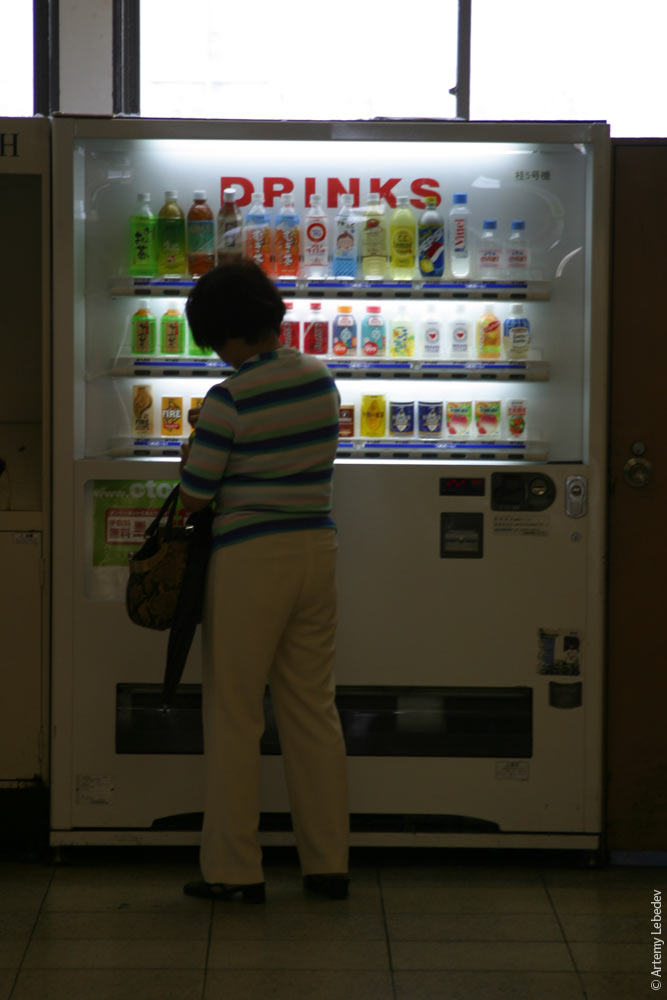 They sure like their automated selling here. 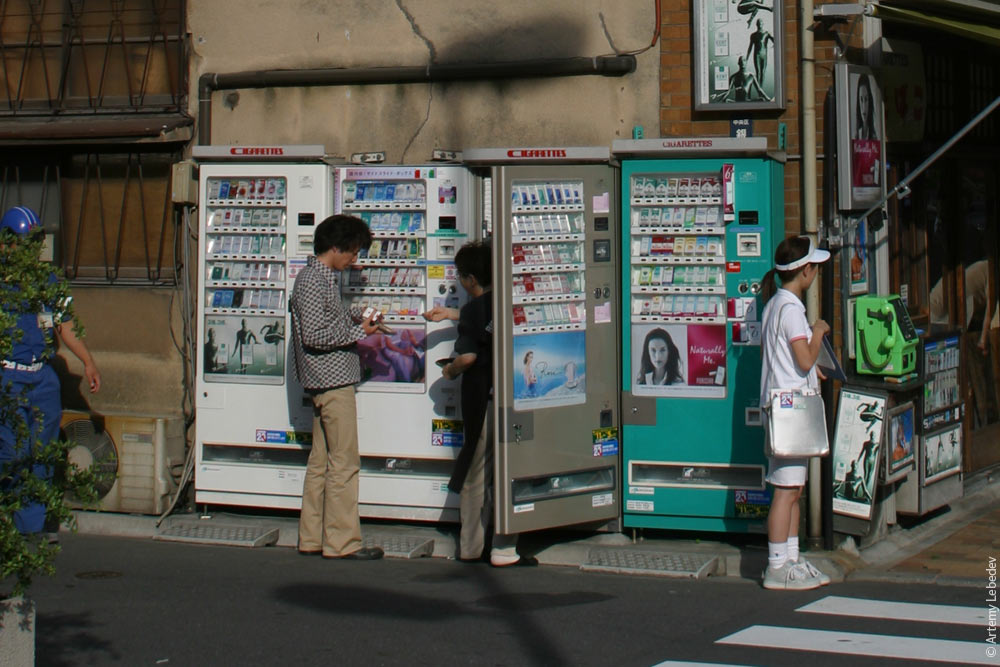 The only ATM we managed to get money out of didn’t dispense it like a normal ATM would. At first I didn’t understand where the banknotes had come out, although the ATM’s voice did it’s best to convince me not to leave anything behind. Having examined the entire surface of the ATM very carefully, I noticed that its belly had opened up and that ten thousand ¥ in profile were poking out of it (each banknote is 50 microns thick). The exterior of the bit where you get our banknotes resembles the entrails of a printer grappling with a paper jam. I can’t stand sushi, not that I actually came across any. The Japanese eat the same things other Asians do — noodles and rice. There are always rubber models of the food displayed in the windows of all the food joints. 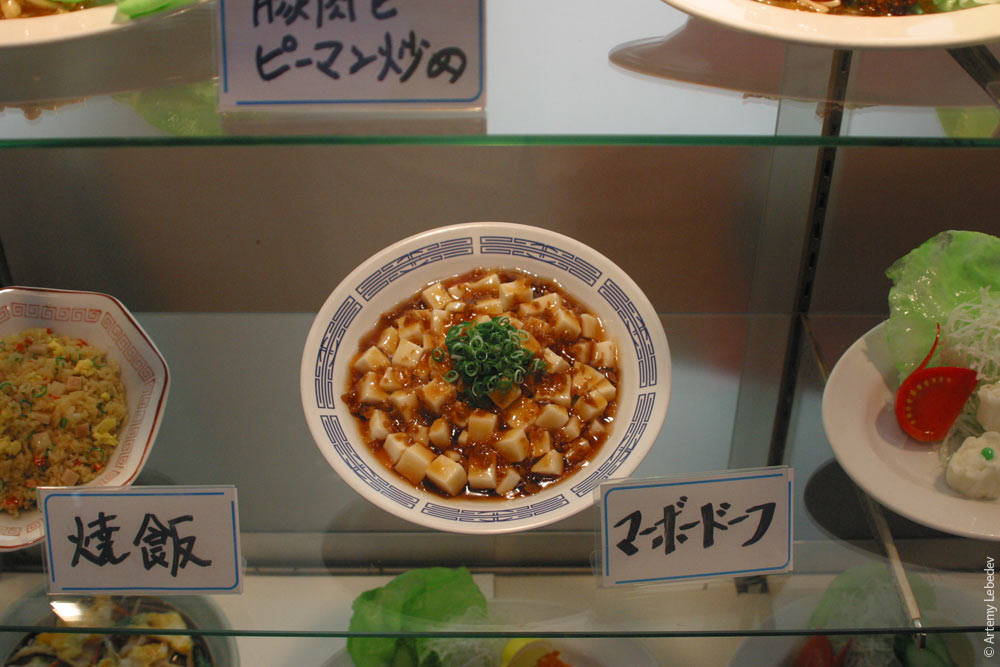 Their construction cranes don’t look like ours. It’s as if half of the parts were missing. 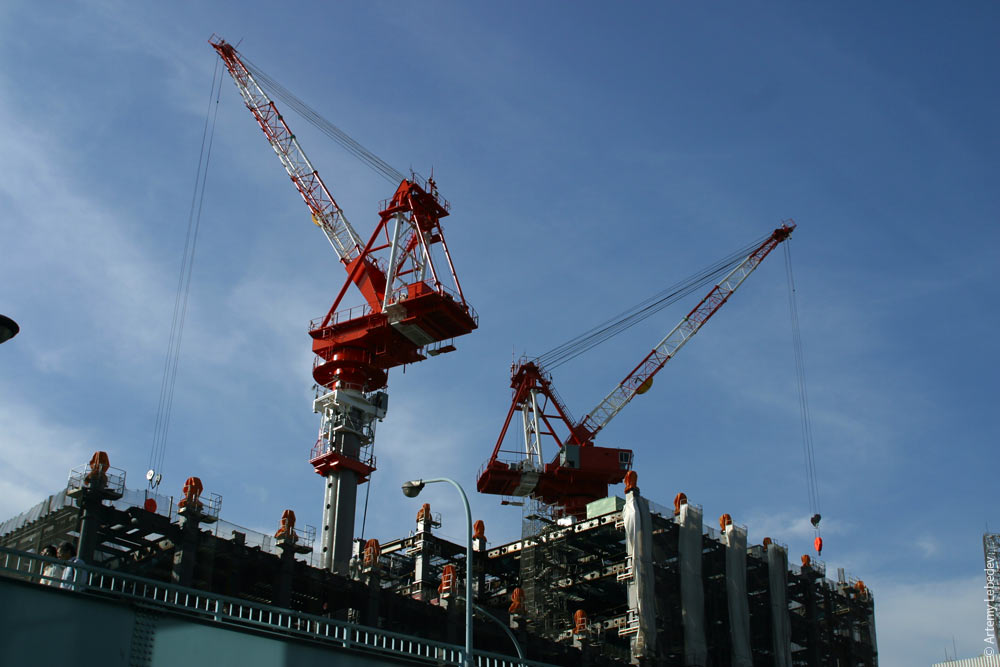 Postbox. 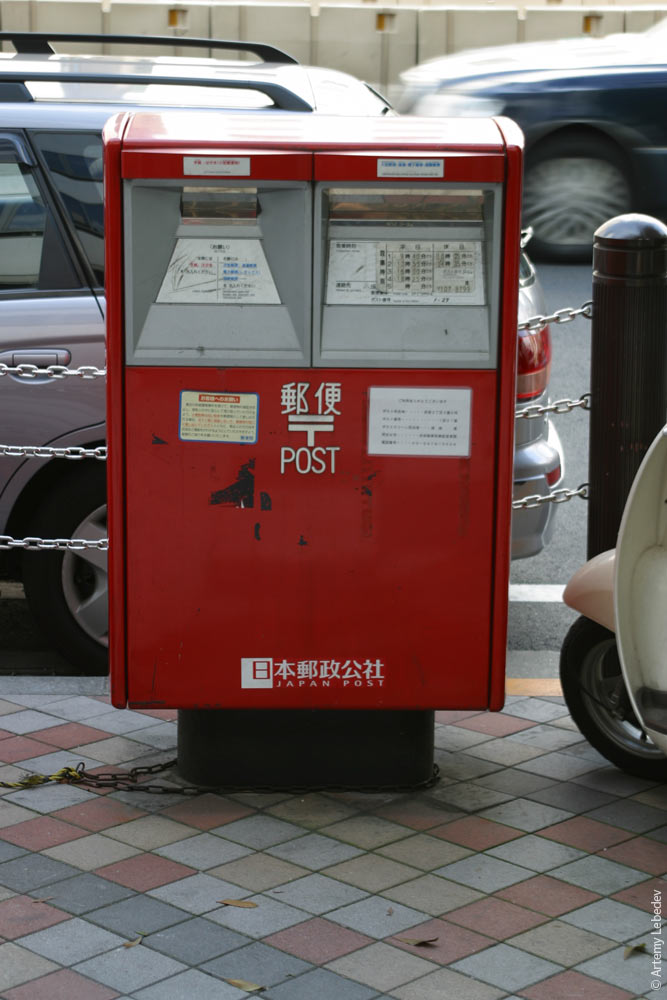 The width of all of signs on the buildings is standardised, ruling out the hodgepodge look. 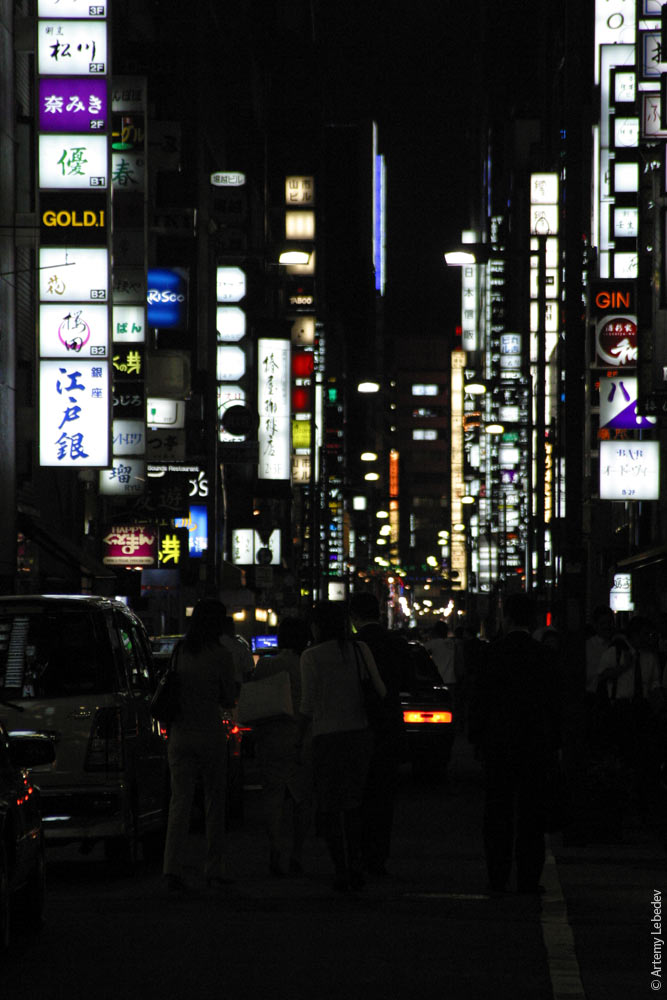 You see a lot of people in the street whose jobs are astounding in their pointlessness. Here, for instance, is a man whose job is to hold this sign (cf. Malaysia, for instance). 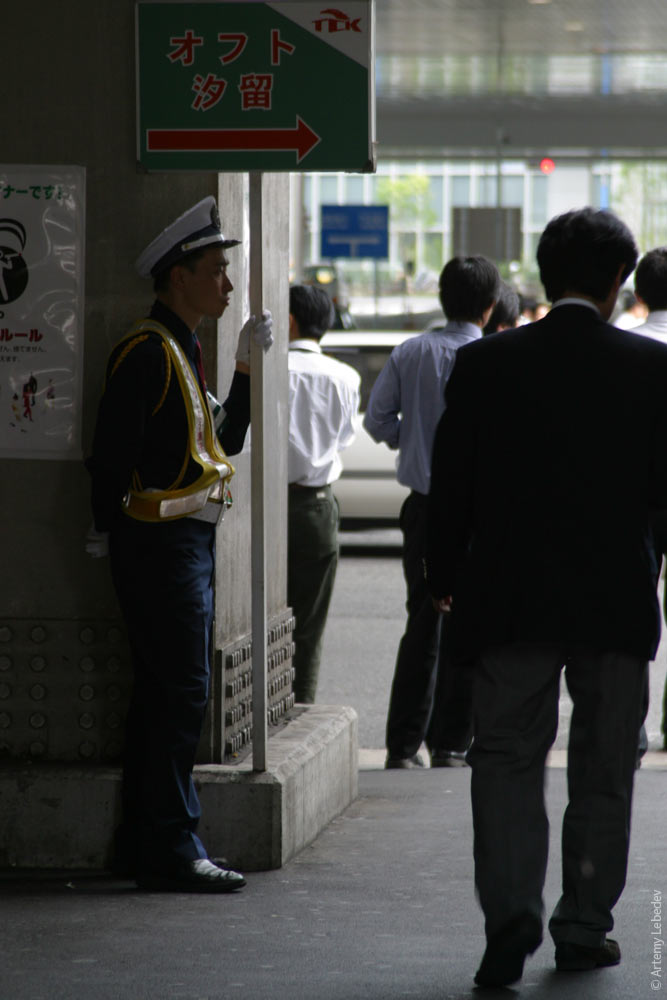 Almost all of the toilets are electrified. There’s a remote on the side of the toilet bowl, which controls the toilet seat heating, as well as the bidet. Getting your head around the heated toilet seat is simple enough — it works just like a heated steering wheel. Meanwhile, the bidet is a button that sets into motion a special thingamabob, which in turn directs a jet of warm water right at your derriere. The sink is positioned above the tank. Genius. 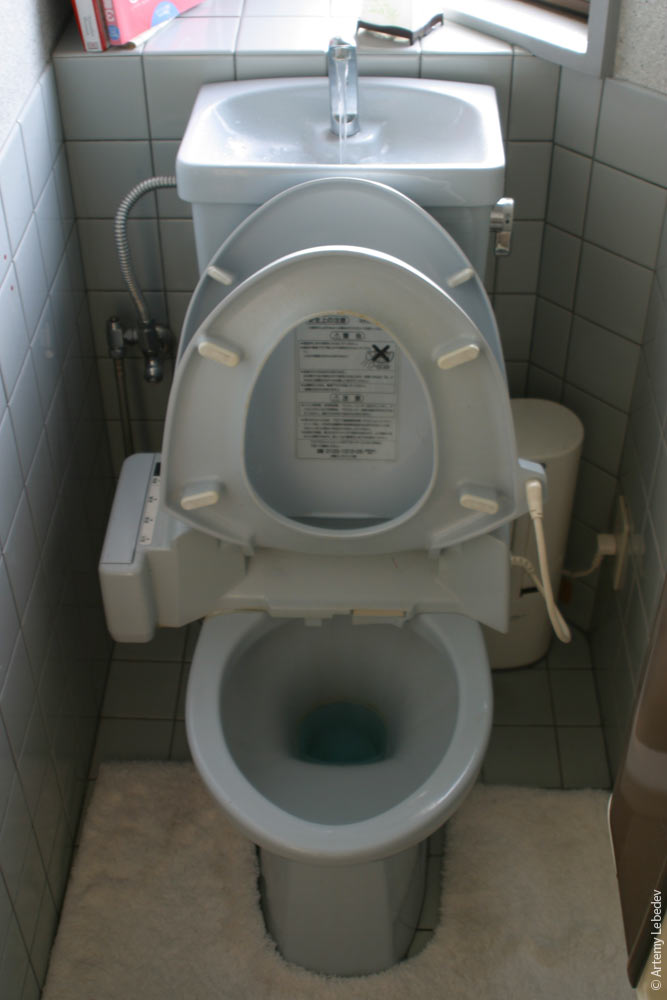 The Japanese absolutely adore skyscrapers and appreciate handsome architecture. 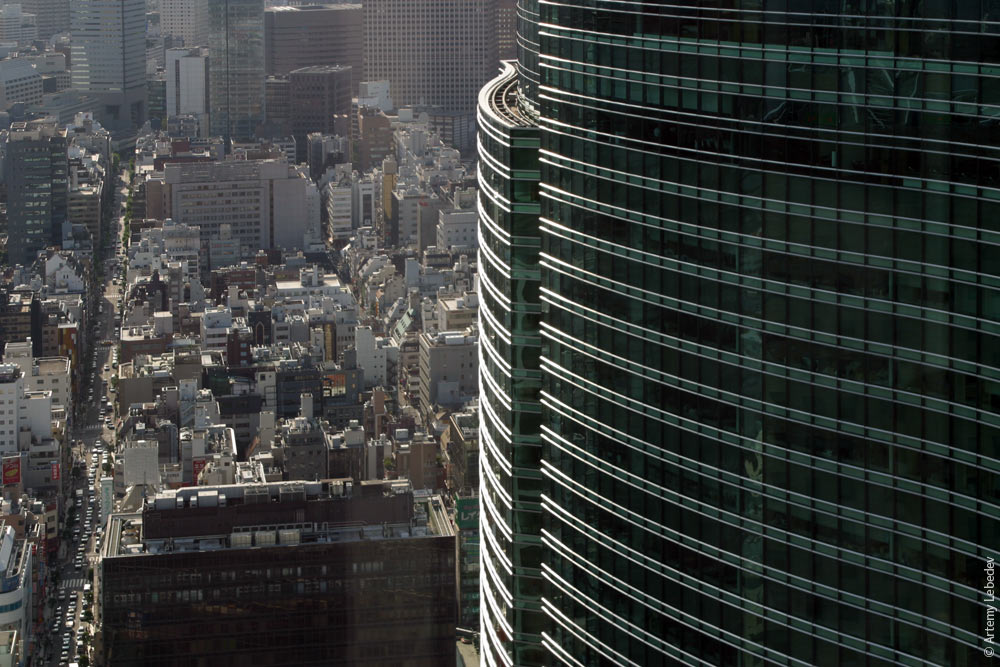 But the main decorative elements are the spaghetti tangles of electric cables you see everywhere. Only on the most central streets do they hide them underground. 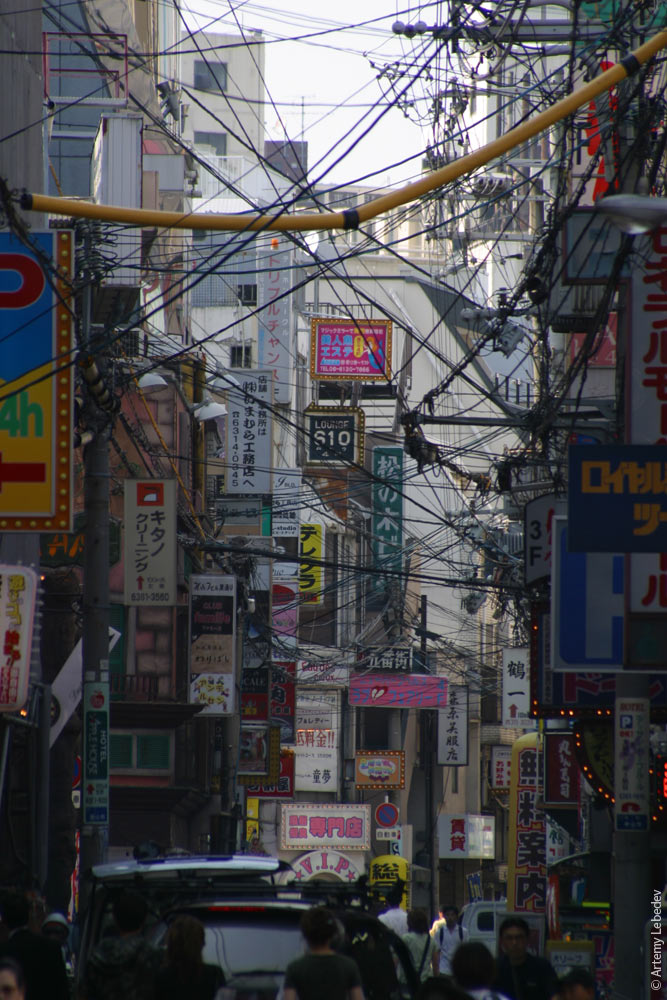 This is all because of the earthquakes. 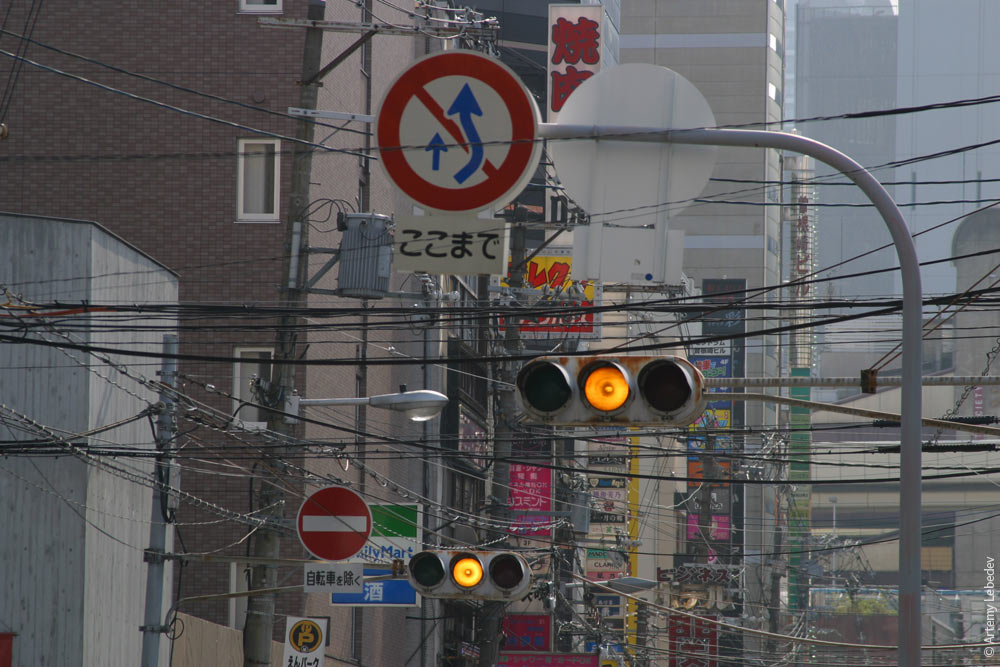 The glass of the first light on of all the traffic lights is blue, although it actually glows green. Almost all of the traffic lights are horizontal. 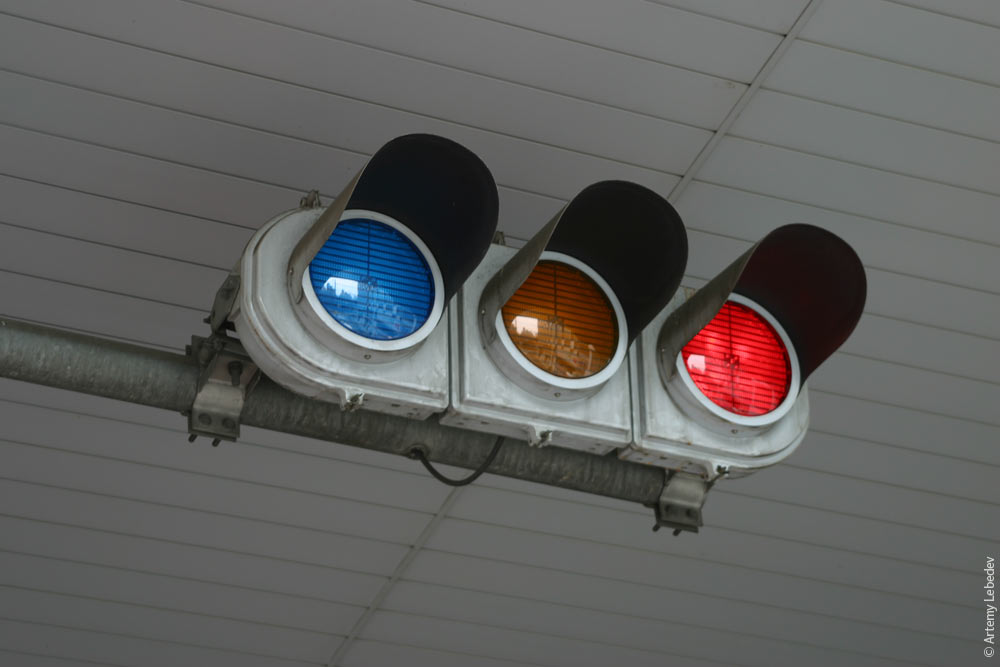 You’d think that half of the people here were blind — there are special coded surface paths on all of the pavements: straight lines designate the road, whereas bumps mean “be careful”. 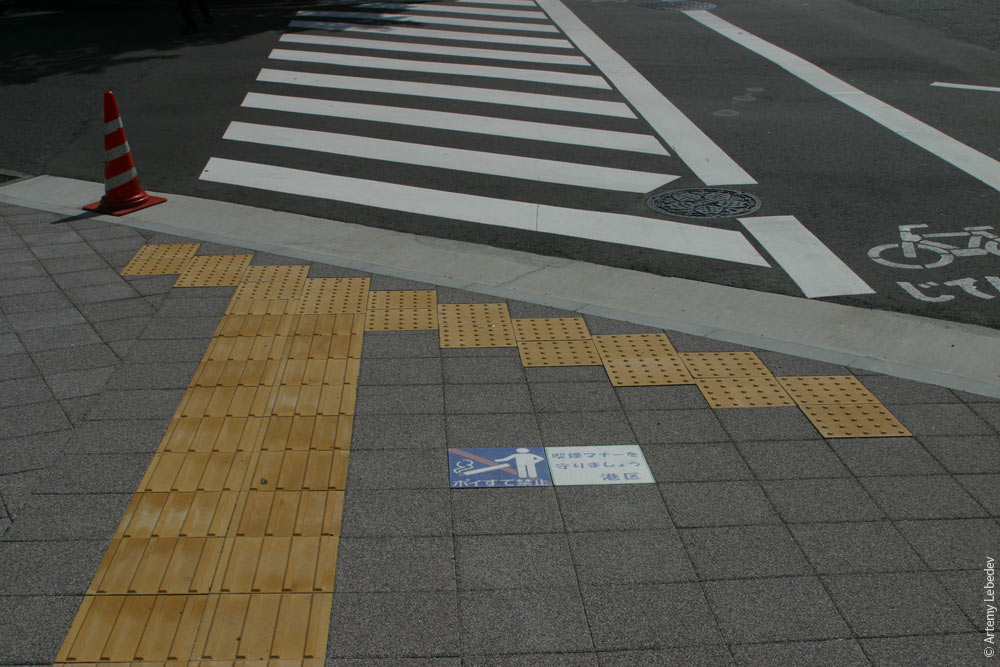 You can spot the Soviet stop-motion cartoon character Cheburashka quite often. For some mysterious reason Cheburashka has become very popular here. 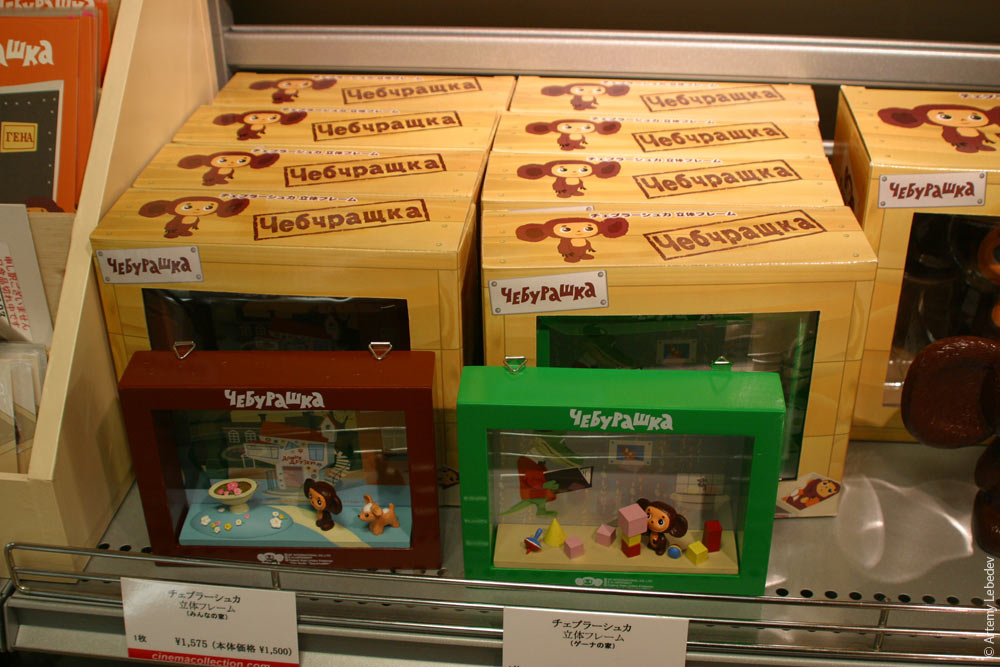 The poles and electrical cables are covered with a special texture, to which flyers have trouble sticking. 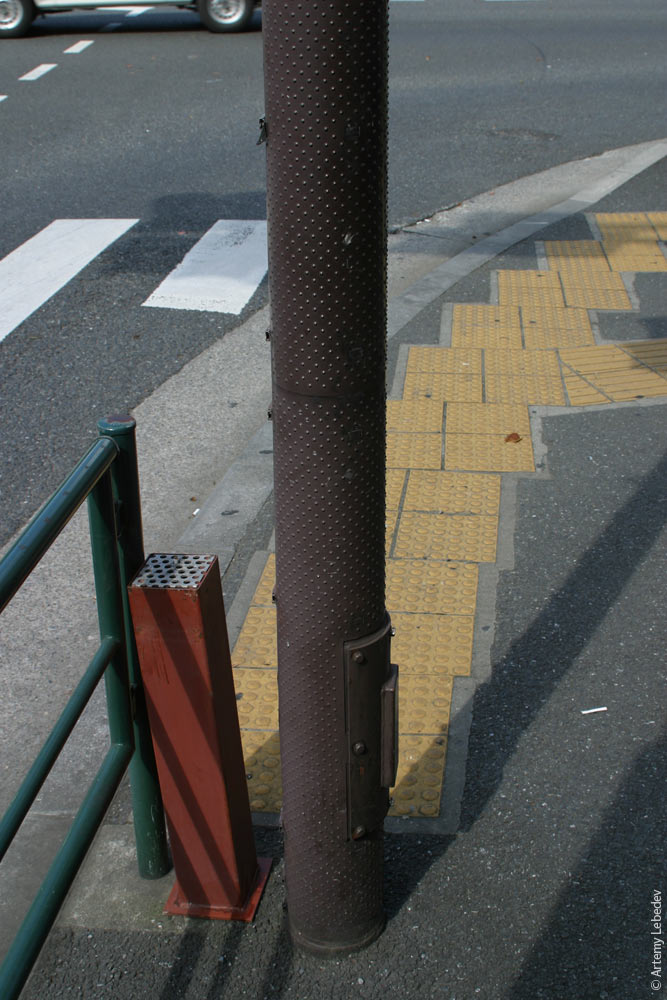 Elections. 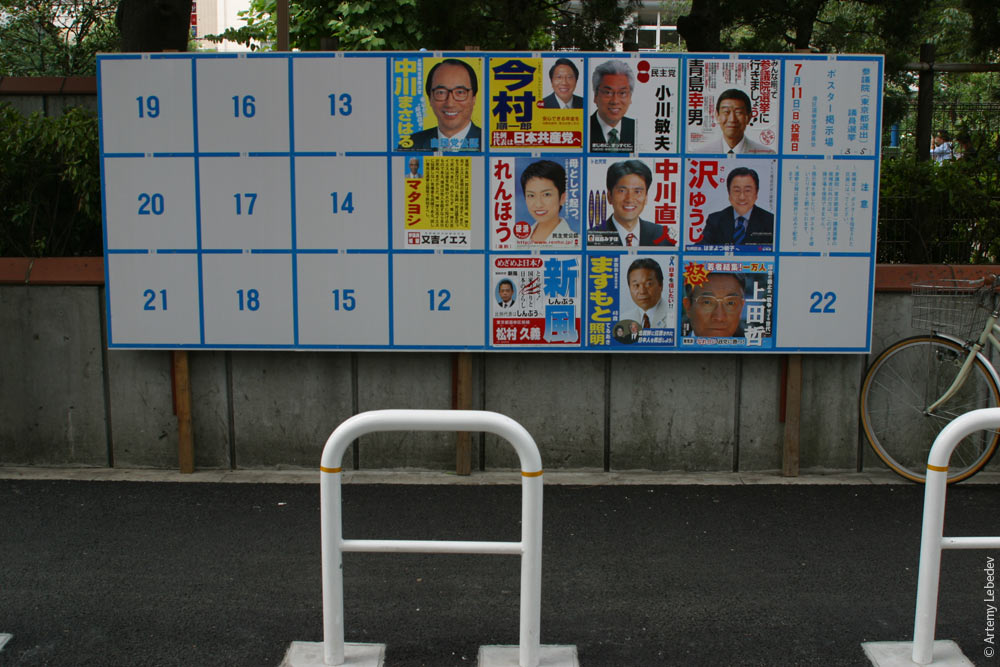 Pedestrian path. 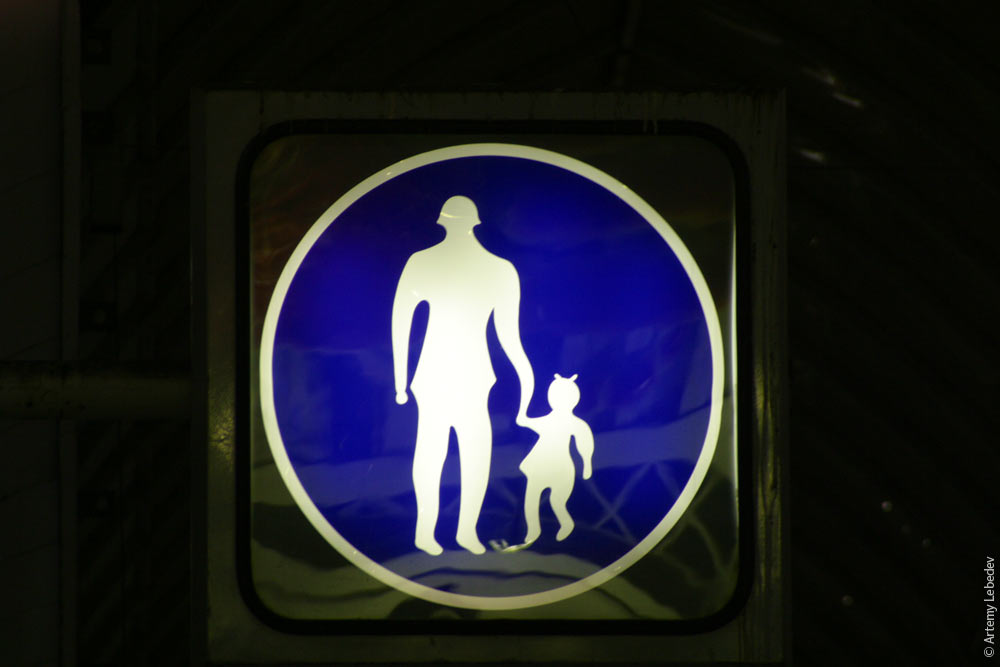 Pedestrian crossing. 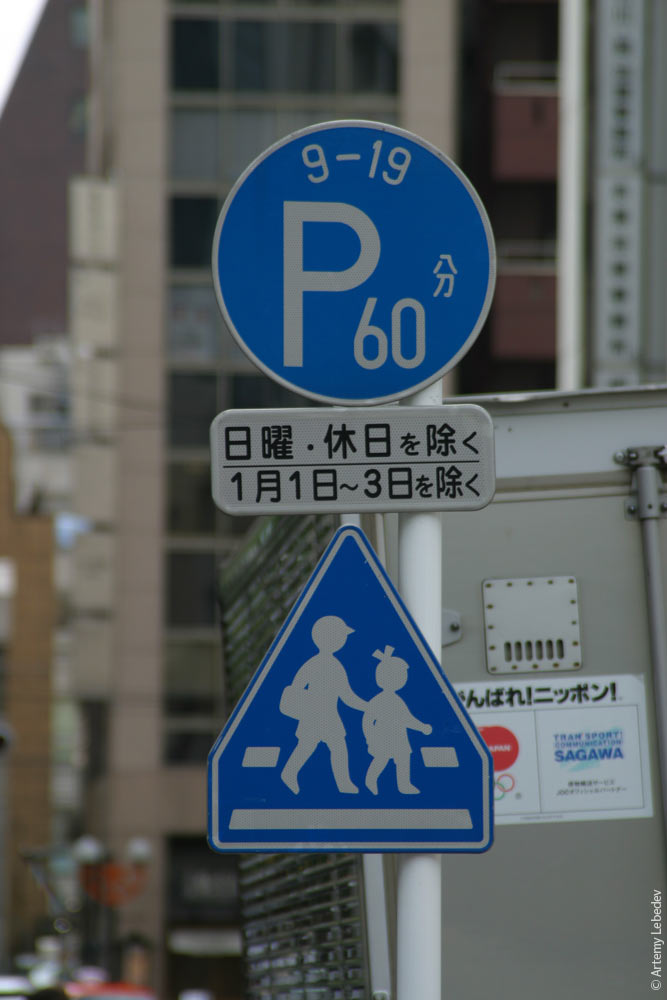 No crossing. 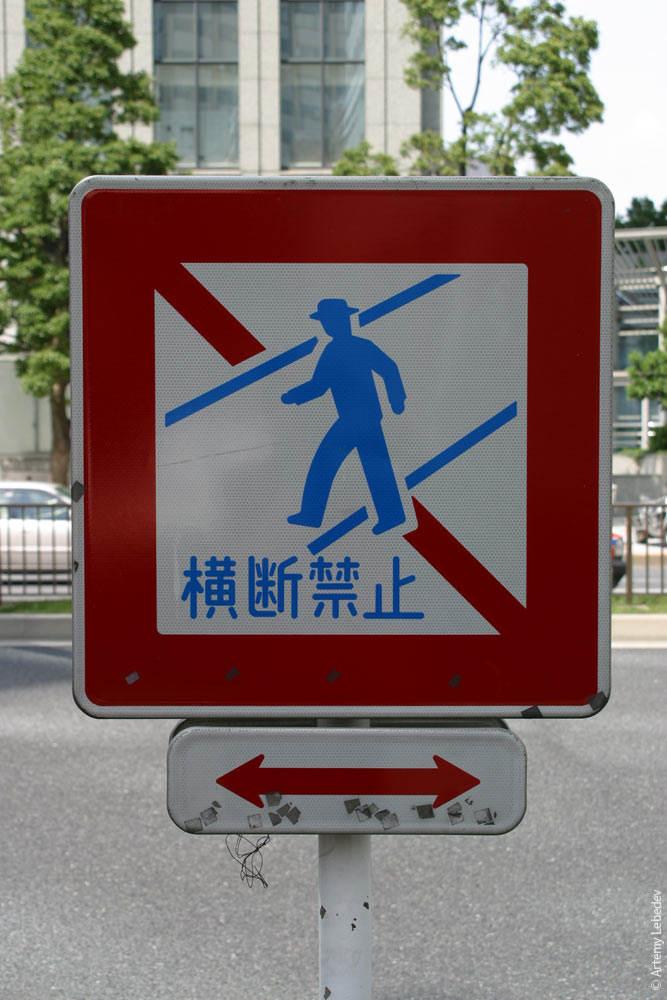 Lots of bans. 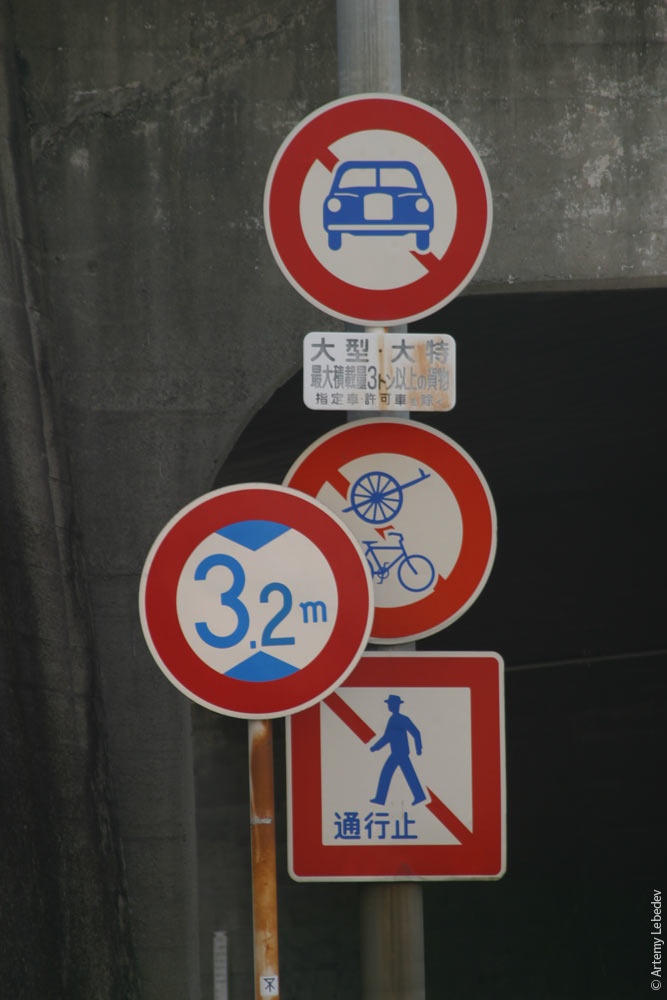 The Japanese introduce realistic lines on road signs with astounding ease. 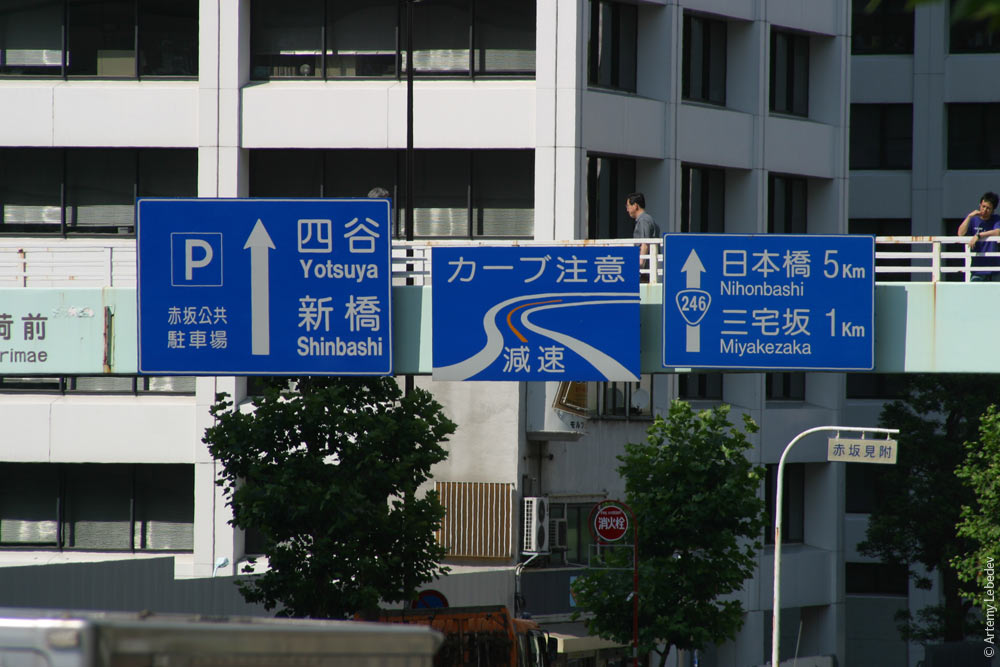 There aren’t many parking spots and yet you don’t see any traffic jams. 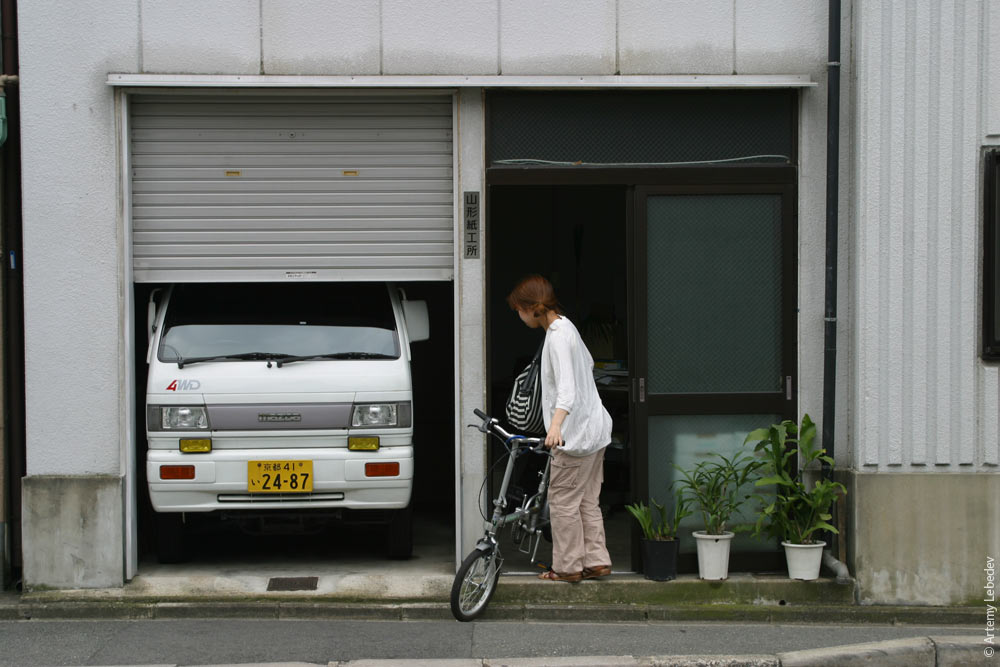 All of the Buddhist temples are decorated with swastikas. 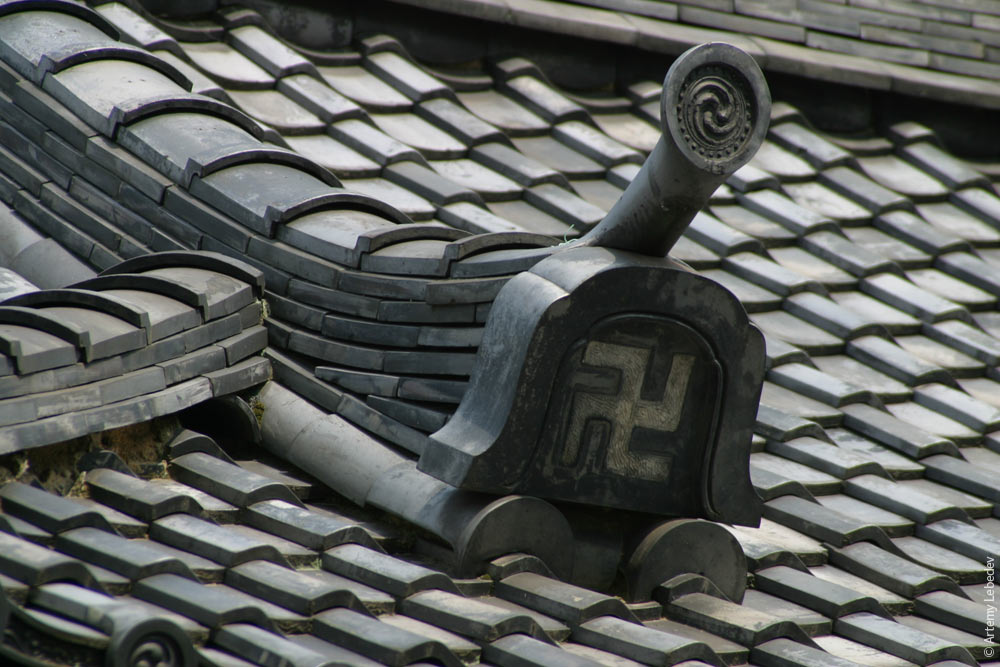 NiigataMapThere’s a plane from Khabarovsk that flies here. Parking district. 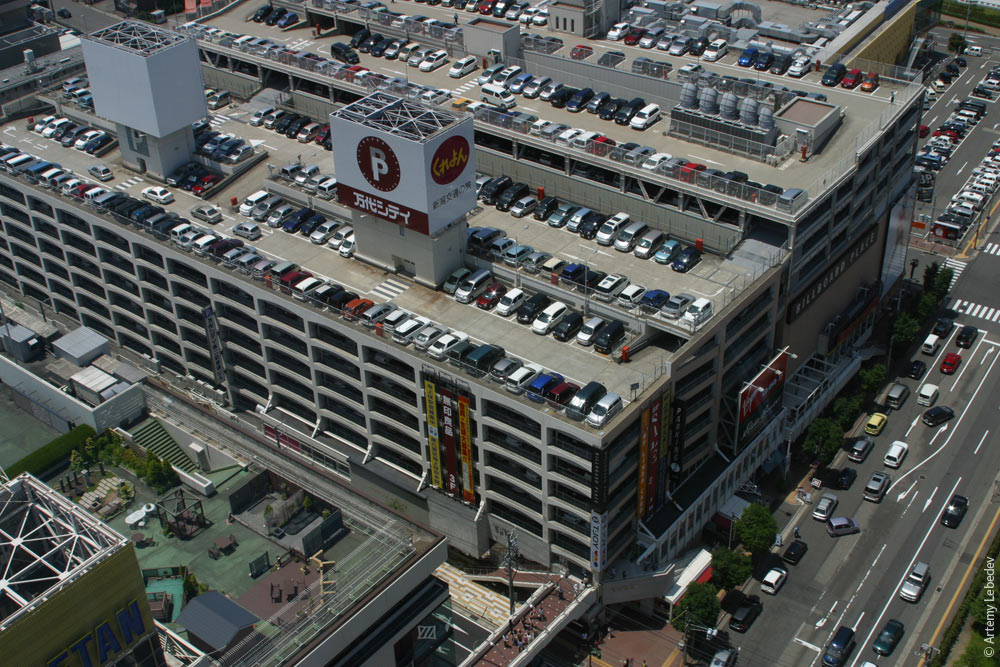 Housing. 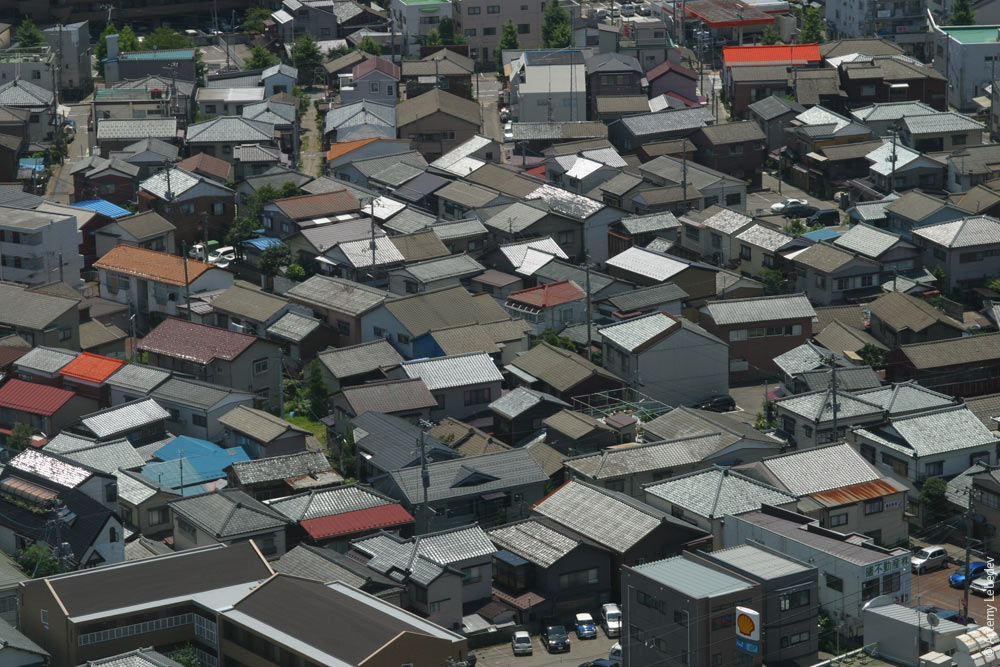 There are marvellous pedestrian traffic lights in Niigata. They do the countdown not in seconds, but in bars. 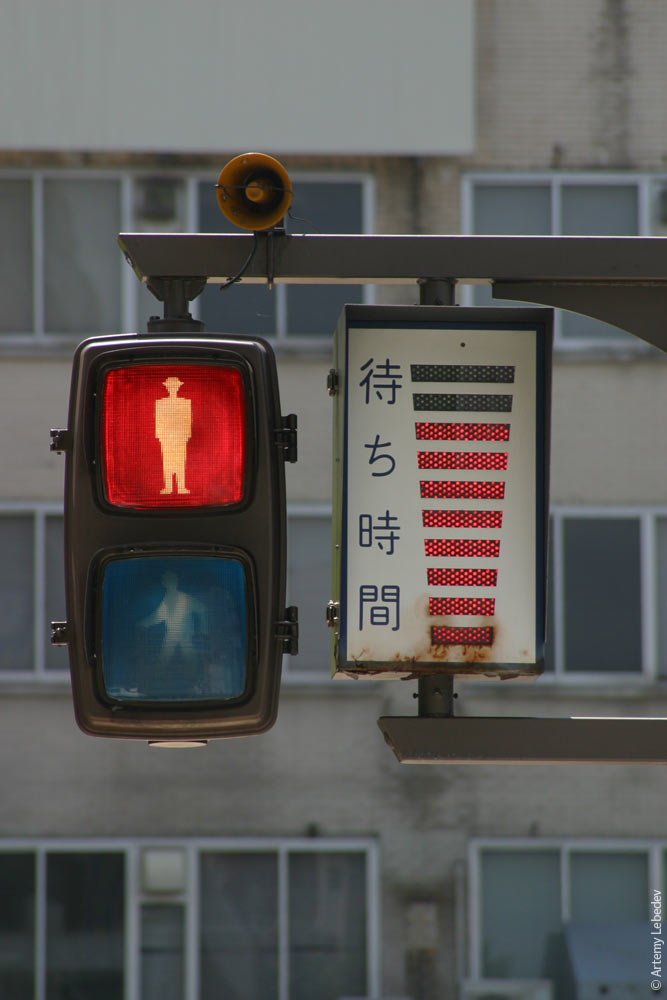 Here’s an intersection where you can cross to any of the other sides. At some intersections you can only cross diagonally during the allotted times. 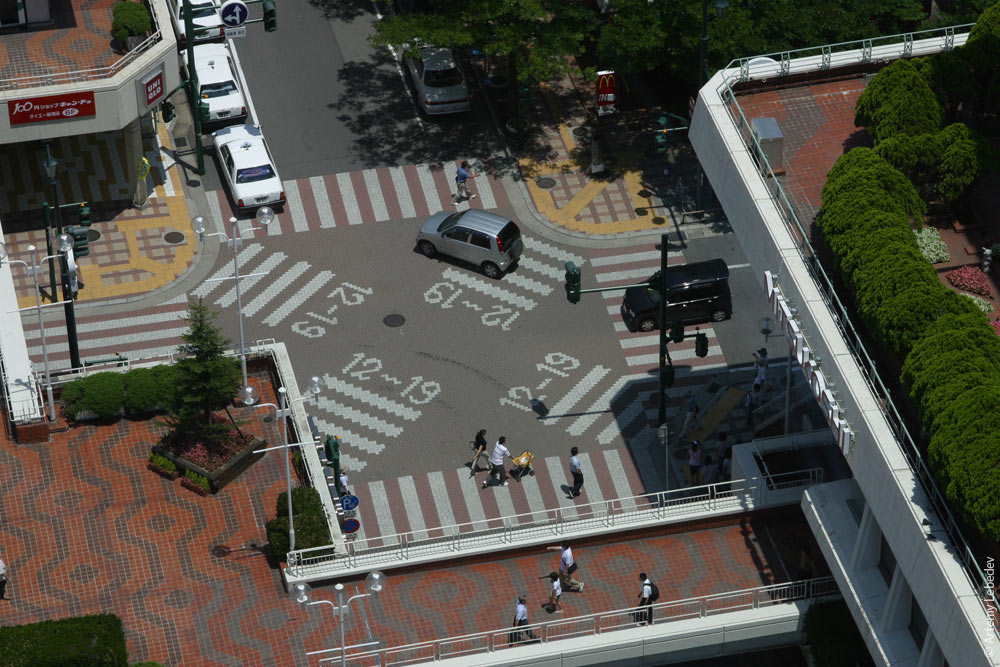 I got a taxi to the train station. In the taxi there’s a monitor, its purpose unknown. Lace fabric lines the entire interior, including the doors. 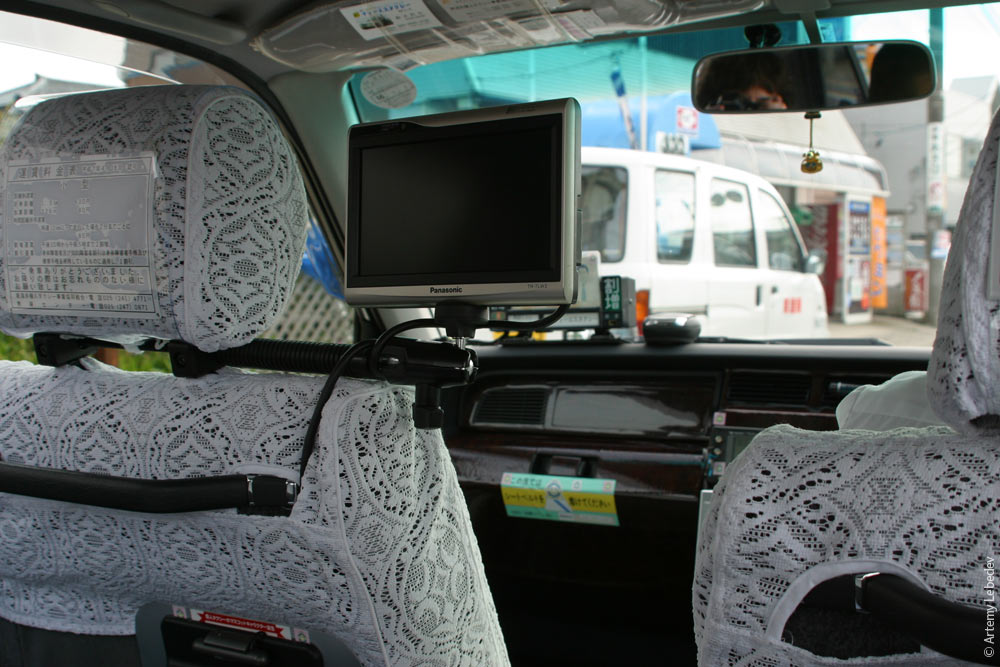 The Japanese have a surprisingly poor command of English. The bullet train from Niigata to Tokyo takes three hours. TokyoMap
Shinkansen (“new trunk line” in Japanese) — is a high-speed, broad-gauge (by Japanese standards) system of express trains. Although the locomotives’ design is reminiscent of a space shuttle, the train carriages are bog-standard (they clearly lag far behind the new “Siemens” ones, in terms of both comfort and extra features). All of the four locomotives in this photograph are different. 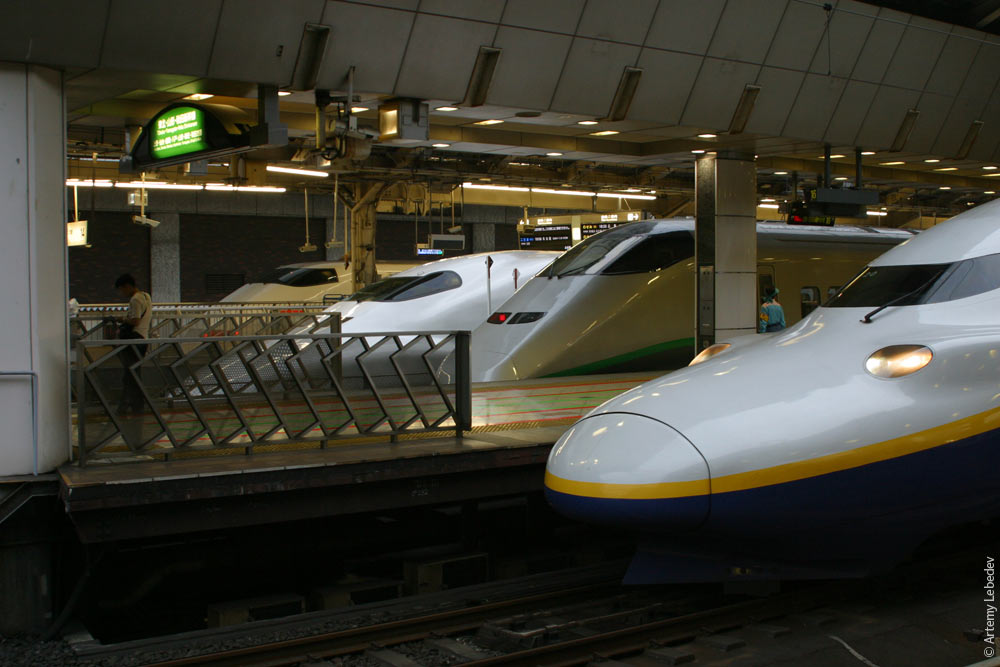 But that doesn’t stop them from kissing. 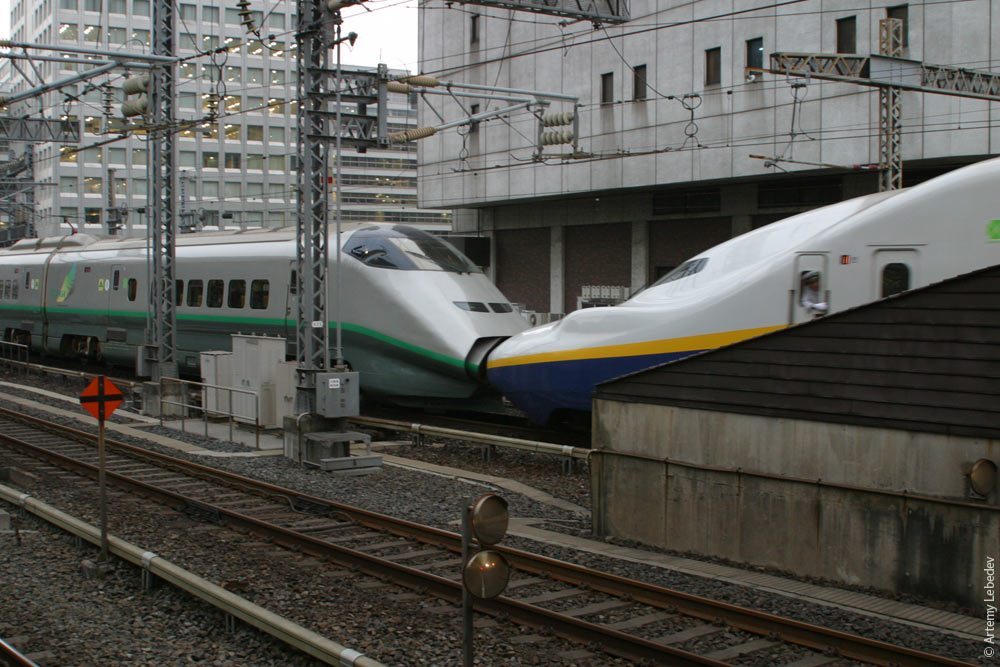 I got off the train in Tokyo and was immediately entranced. Every second a different type of train went by — the metro, suburban trains, superexpresses. And they all did so at different speeds, on different levels, on different tracks. Eyes used to seeing a maximum of two trains in motion at any one time had trouble keeping track of all of these objects moving all at once. Capital city. 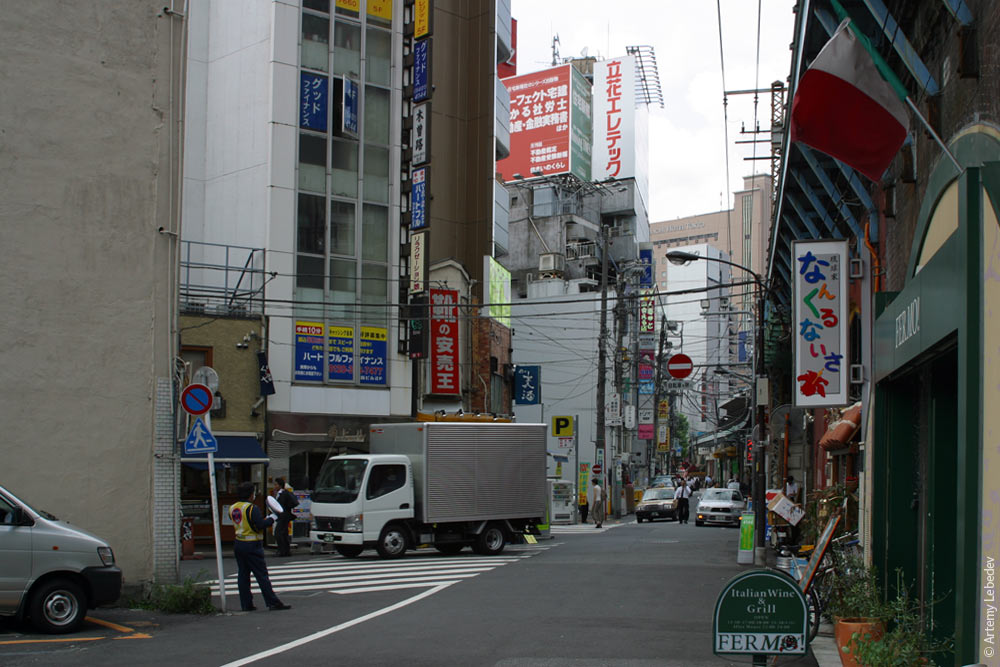 Pedestrian traffic light. 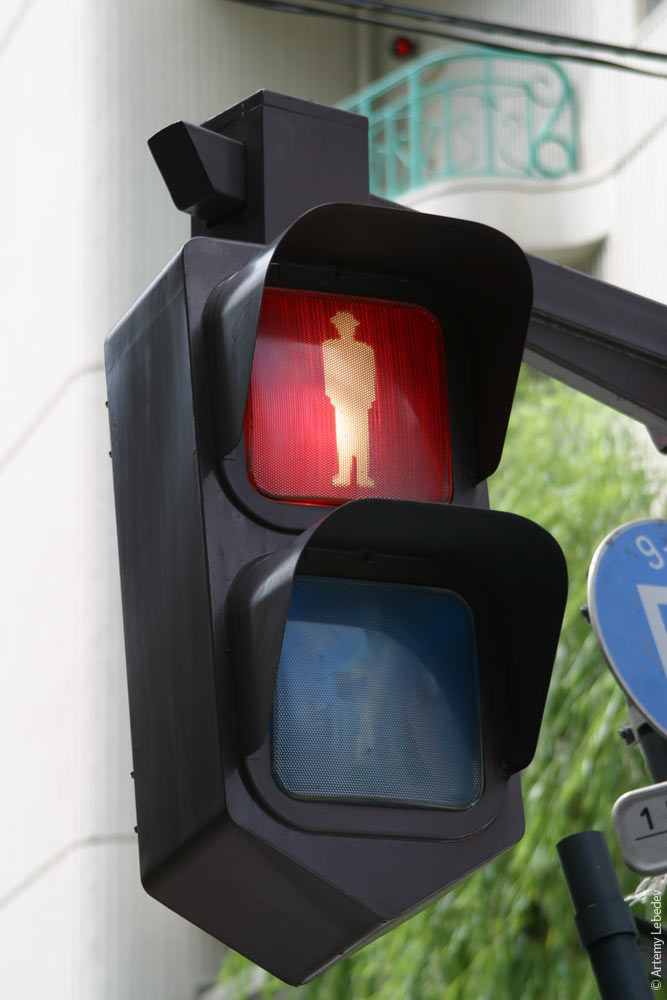 Compact payphone. 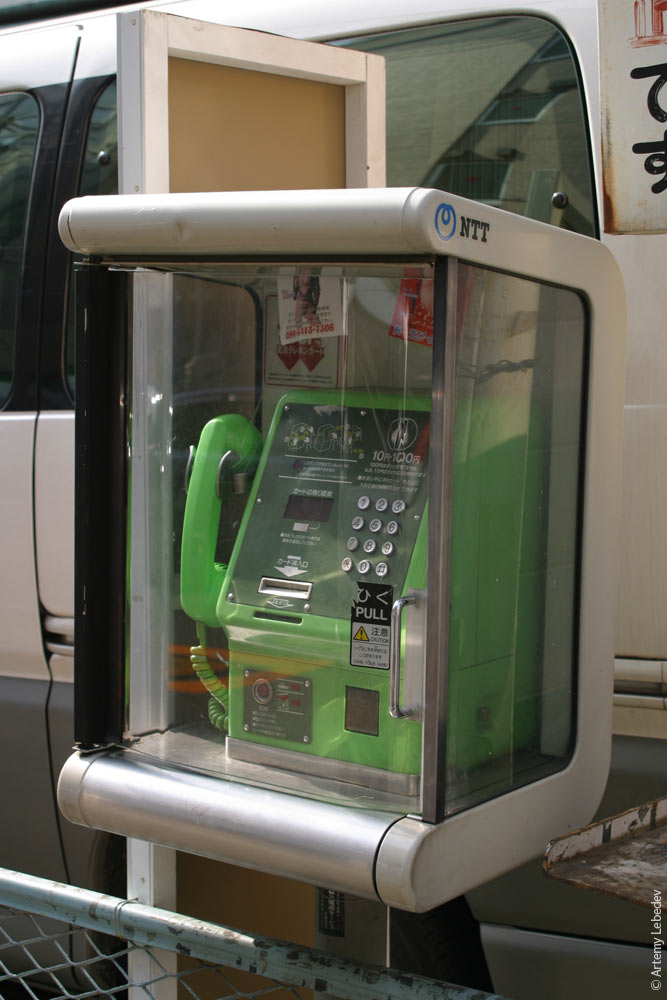 Full-sized payphone. 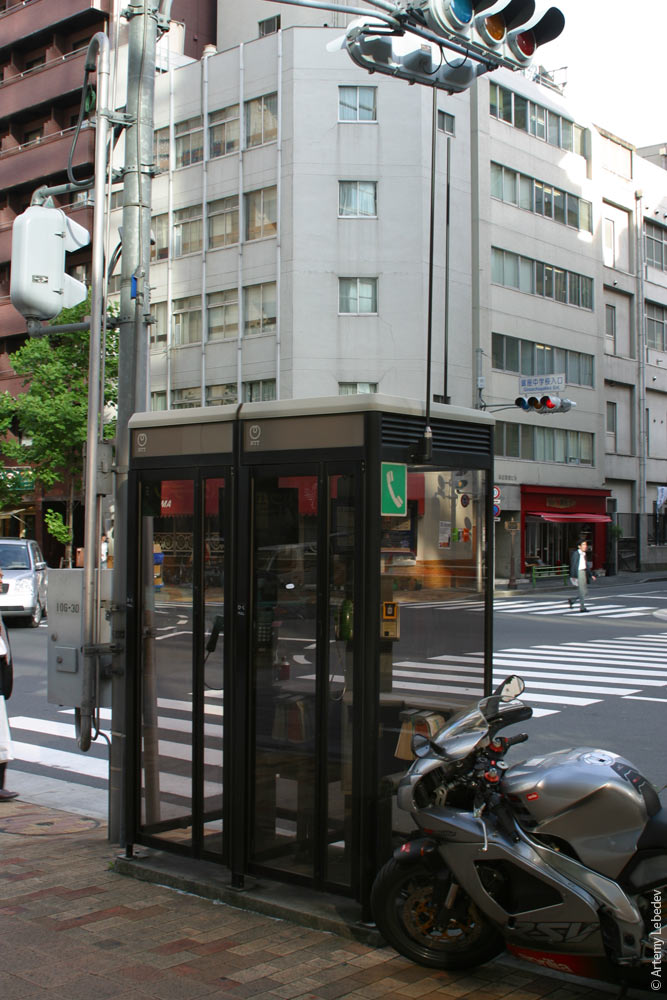 KyotoMap
The train’s toilets came in two styles — western and eastern (that’s what the signs on doors said). There’s no need to describe the western-style toilet. The eastern-style toilet turned out to be a pit toilet, like you get in military barracks. The train station in Kyoto deserves a separate photo essay. The railway tracks are down below. There’s a gigantic building towering over them. In it are several hotels, shopping centres, as well as loads of shops, restaurants, escalators, and sculptures. Overlooking these there’s an observation deck the size of several tennis courts, in addition to a helipad. Kyoto is probably the only place in the world where you would go up to the top of the train station in order to look out at the city. 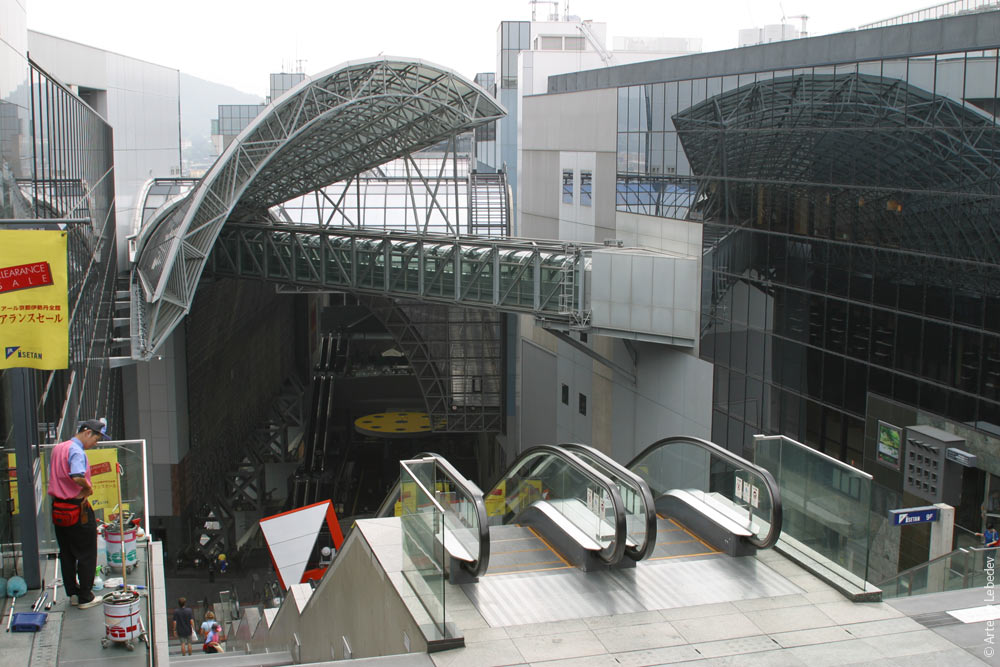 I came across a number of imperial-era residences in Kyoto. To view them you have to apply for permission from the ministry of queuing affairs several days in advance. The residences were duly visited, but nothing of note was to be found in them. They were beautiful, but that’s it. 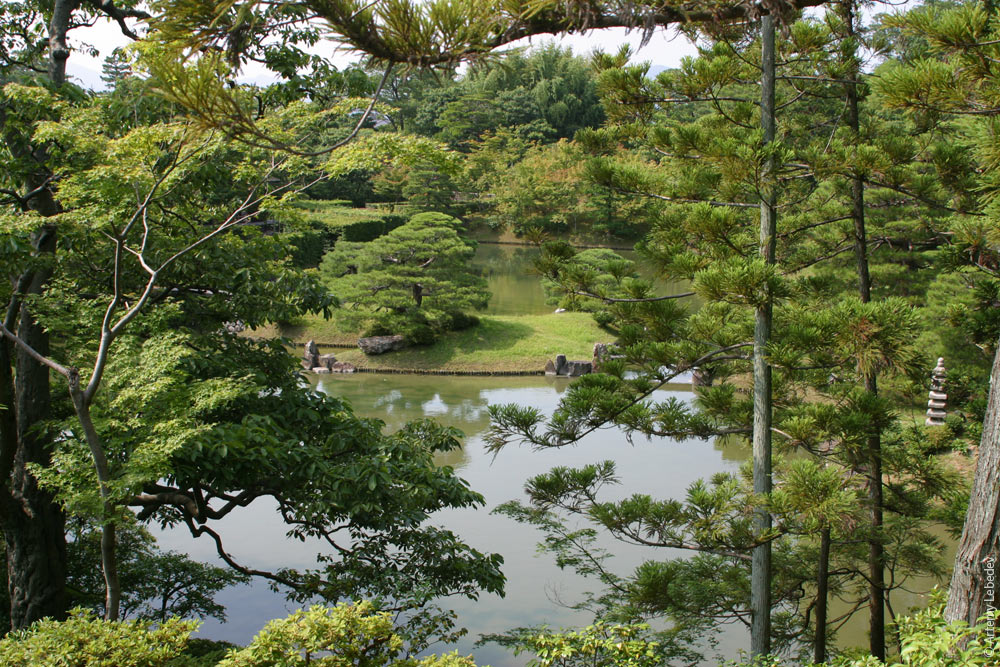 Even ordinary foliage here is pretty, like embroidery on silk fabric.  Kyoto rubbish bin. 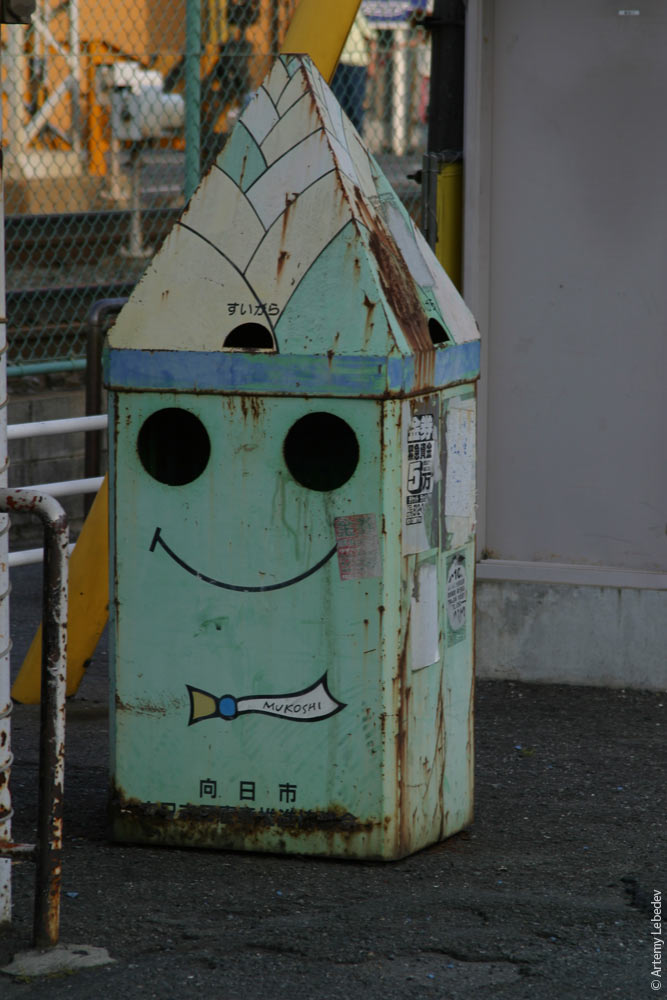 Kyoto phone box. 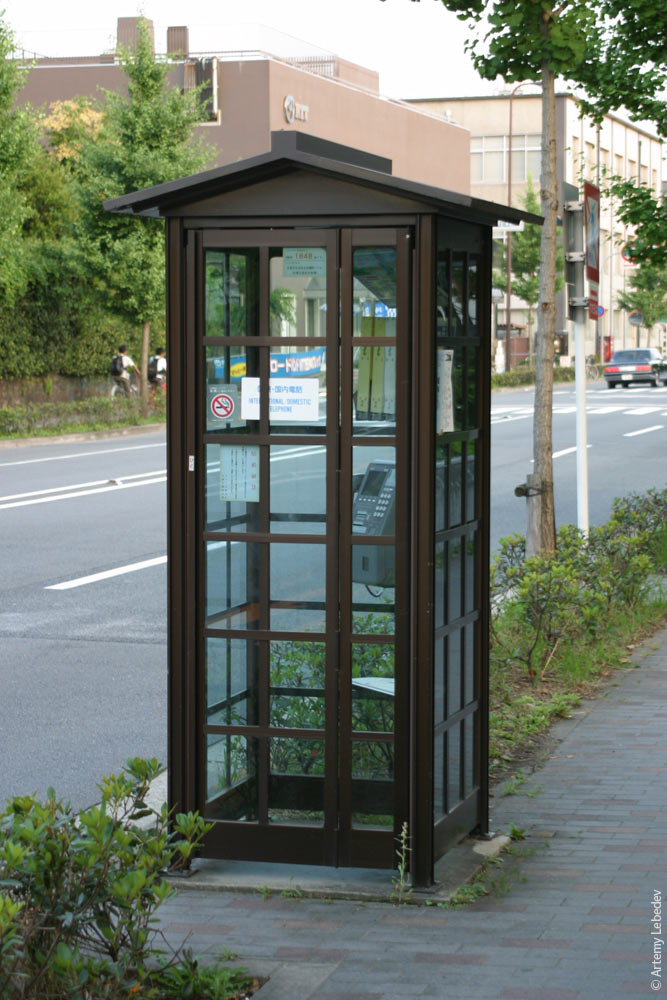 OsakaMap
The Ferris wheel is perched above the seventh floor of a shopping centre. It wouldn’t fit any further down. 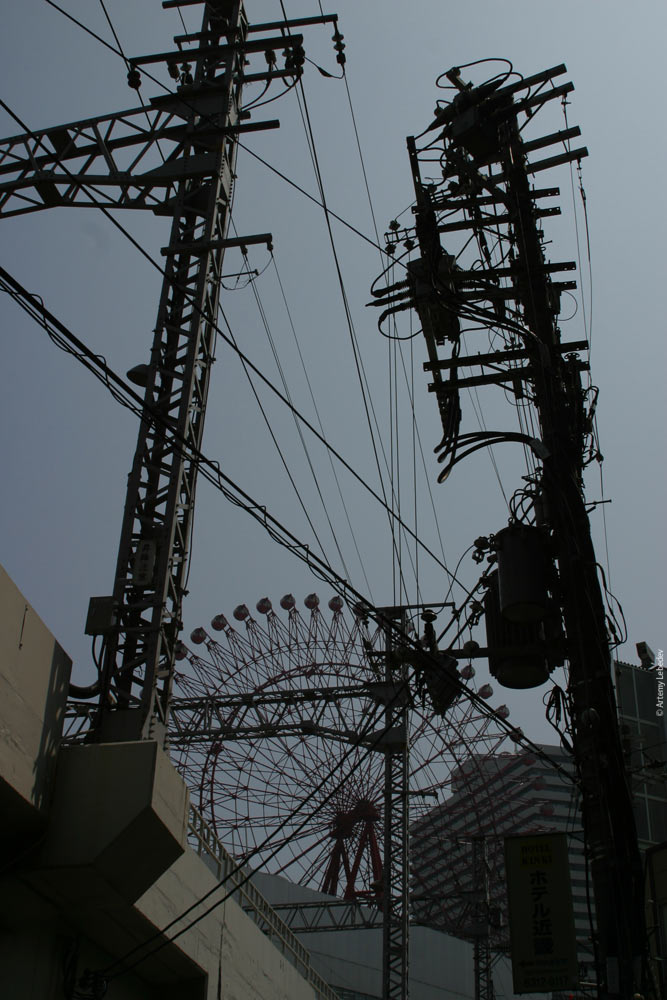 View from the Ferris wheel. 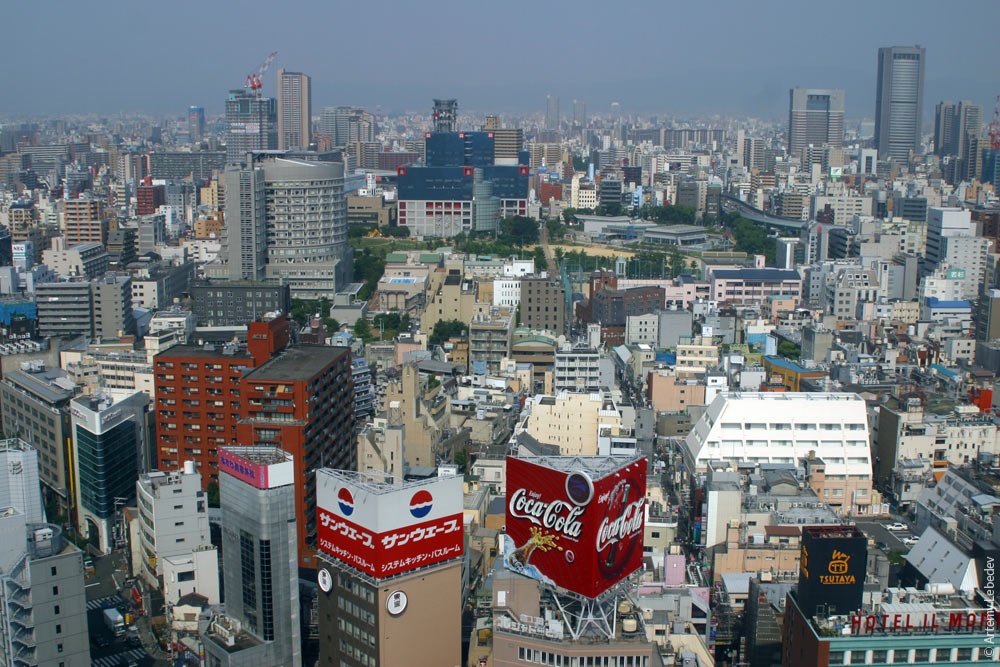 * * * At the airport I came up against unassailable Japanese pedantry for the first time. Local airline industry regulations allow passengers to carry a lighter. Just one. The other five illegal lighters I was carrying were removed and placed in the tray. I was invited to say my goodbyes to them. I politely declined to gift them to the airport. They politely pointed out the rules to me. I insistently expressed polite disagreement with with their unreasonable rules. This was met with polite, but insistent certainty in their initial objection to my carrying the extra lighters. Baggage screening staff, their shift supervisors, deputies, and inspectors all came to see me in turns. They were all taking time out of their schedules to explain to me that no matter how much I might want to, I cannot take an additional lighter with me, not even one. At last I got fed up with all this politeness and went off to catch my flight. |